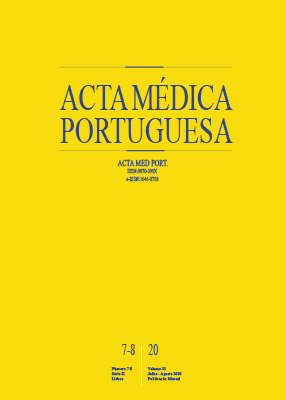Neonates Born to Mothers with Graves’ Disease: 15 Year Experience of a Pediatric Endocrinology Department
DOI:
https://doi.org/10.20344/amp.12279Keywords:
Graves Disease, Infant, Newborn, Mothers, Pregnancy Complications, Prenatal Exposure Delayed EffectsAbstract
Introduction: Graves disease is characterized by the existence of autoantibodies directed to the thyrotropin receptor, which can have a stimulatory/inhibitory action, in women with the condition, their fetus or neonate. Our aim was to review the case series of these neonates in order to establish neonatal thyroid function predictors.
Material and Methods: Retrospective cohort study of the database of the Department of Pediatric Endocrinology, including patients born to mothers with Graves’ disease, between 2002 and 2017. Clinical and biochemical data were collected from mothers and offspring.
Results: Fifty newborns, from 46 women with a median of 3.5 years after diagnosis, were included. During all trimesters of pregnancy, more than half of women had positive autoantibodies directed to the thyrotropin receptor. Not every woman had a complete thyroid function evaluation every trimester. In 32 newborns, cord blood screening was done. During the neonatal period, there were three cases of hypothyroidism and two of hyperthyroidism. The mothers of these five newborns had higher levels of free thyroid hormones during the second trimester (p = 0.03). The level of antibodies directed to the thyrotropin receptor was significantly higher in the cord blood (p = 0.03) and in the first neonatal test (p = 0.03) of these dysthyroid newborns.
Discussion: Our results reinforce the need for every pregnant woman with Graves’ disease to be subject to thyroid function and autoantibodies evaluation during every trimester, as well as the importance of evaluating these antibodies in cord blood.
Conclusion: High levels of free thyroid hormones during the second trimester of pregnancy and antibodies directed to the thyrotropin receptor value in cord blood are predictors of dysthyroidism in neonates born from women with Grave’s disease.
Downloads
Downloads
Published
How to Cite
Issue
Section
License
All the articles published in the AMP are open access and comply with the requirements of funding agencies or academic institutions. The AMP is governed by the terms of the Creative Commons ‘Attribution – Non-Commercial Use - (CC-BY-NC)’ license, regarding the use by third parties.
It is the author’s responsibility to obtain approval for the reproduction of figures, tables, etc. from other publications.
Upon acceptance of an article for publication, the authors will be asked to complete the ICMJE “Copyright Liability and Copyright Sharing Statement “(http://www.actamedicaportuguesa.com/info/AMP-NormasPublicacao.pdf) and the “Declaration of Potential Conflicts of Interest” (http:// www.icmje.org/conflicts-of-interest). An e-mail will be sent to the corresponding author to acknowledge receipt of the manuscript.
After publication, the authors are authorised to make their articles available in repositories of their institutions of origin, as long as they always mention where they were published and according to the Creative Commons license.









